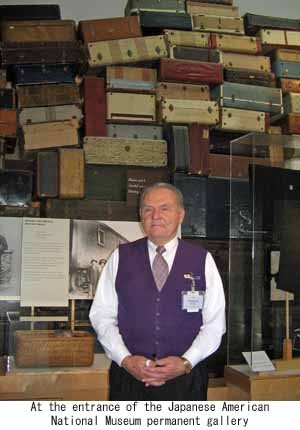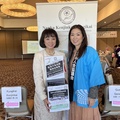I am a Shin Issei—born in Japan, a first generation Japanese American. It has been 17 years since I came to the United States. During that time, I have interviewed many Nikkei. I had several opportunities to visit the Japanese American National Museum in Little Tokyo when it was still using the old Higashi Hongwanji Temple building.
Through my 17 years of experiences living here, I have gained an unwavering respect towards the Japanese Americans who have built a strong foundation for us so that we are able to live in this country now without problems. However, if I had not known about the efforts of these earlier immigrants and their descendants, I would not feel this way. Without knowledge, people cannot appreciate.
What I really want to say is that whether it is Japanese business expatriates who reside in the United States for only a short period of time, or even permanent residents, few people know that Japanese Americans were forced into concentration camps during World War II. Without knowledge of the historical facts, you cannot feel indignation, let alone appreciation.
Nahan Gluck, a volunteer docent at the Japanese American National Museum, is German American, father born in New York. His mother was born in Ireland. Nahan is not of Japanese descent. However, in the 1950s, Nahan met a Japanese American named Kazuo “Kaz” Hirata, whom he now calls his ‘lifelong friend’, at Los Angeles City College. This was a turning point in Nahan’s life. The stories he heard from Kaz about his experience in internment camps were unbelievable. “I had never heard about how he, as a fellow American born in the United States, was forced into living in concentration camps just because he is of Japanese descent.” Nahan attended Kaz’s wedding and reception in Little Tokyo in 1956, and to this day, maintains a good relationship with his entire family.
Nahan’s involvement within the Japanese American community began in 1994, approximately 40 years after first meeting Kaz. In 1992, he had retired from his long time job as a government employee for the County of Los Angeles.
“After eating at a restaurant in Little Tokyo with Kaz and his wife, we walked towards the Japanese American National Museum where we saw an old barrack on display, along the street. I had never seen an internment barrack before, so I was interested and wanted to know what it was. It so happened that this was one of the actual barracks used at the Heart Mountain Internment Camp.”
As he heard and learned more about the camps, Nahan felt strongly that “As an American, no, as a human being, I need to know more about the history of Japanese Americans.” He began to attend lectures in Japanese American history.
“Those lectures provided a series of surprises. I was shocked to learn about the internment camps, but what was more astounding was to hear about 442nd Infantry Regiment Combat Team that was sent to Europe. I became absorbed in the history of Japanese Americans in the United States.”
However, Nahan was not satisfied with just learning this history himself. He thought it was important for others to learn about Japanese American history and submitted an application to become a volunteer at the Japanese American National Museum.
“Honestly, I was not sure if they would accept a Caucasian who is not related to a Japanese American, as a volunteer. However, Lily Oba who was in charge of the volunteers at that time said, ‘You are very welcome here’ and warmly received me. Since then, I have been coming here for over 14 years.”
His first assignment was as a Gallery Guide for the 1995 special exhibition, Fighting For Tomorrow (an exhibition about Japanese American soldiers who joined the Armed Forces to fight overseas). His responsibility was to help museum visitors find information. “Since I jumped into this environment because I was interested, even the smallest job felt fun and fulfilling,” Nahan said.
Wanting a more creative role within the museum, Nahan started to help maintain accurate records of Japanese American soldiers. When museum visitors found discrepancies in a soldier’s name, rank, birthplace, or period of service, they would note it on a list that Nahan used as a resource.
“Obviously, I could not change the original source so I made comments next to such discrepancies, noting ‘as indicated by a museum visitor’. I worked for many months. There was the issue of the expansiveness of compiling such extensive data, but it also took me a long time because I cannot type. So I had to diligently find each letter on the keyboard. Why did I put in so much effort? It stemmed from my appreciation for Japanese American soldiers and wanting to leave accurate records for them. That’s it.”
© 2009 Keiko Fukuda






